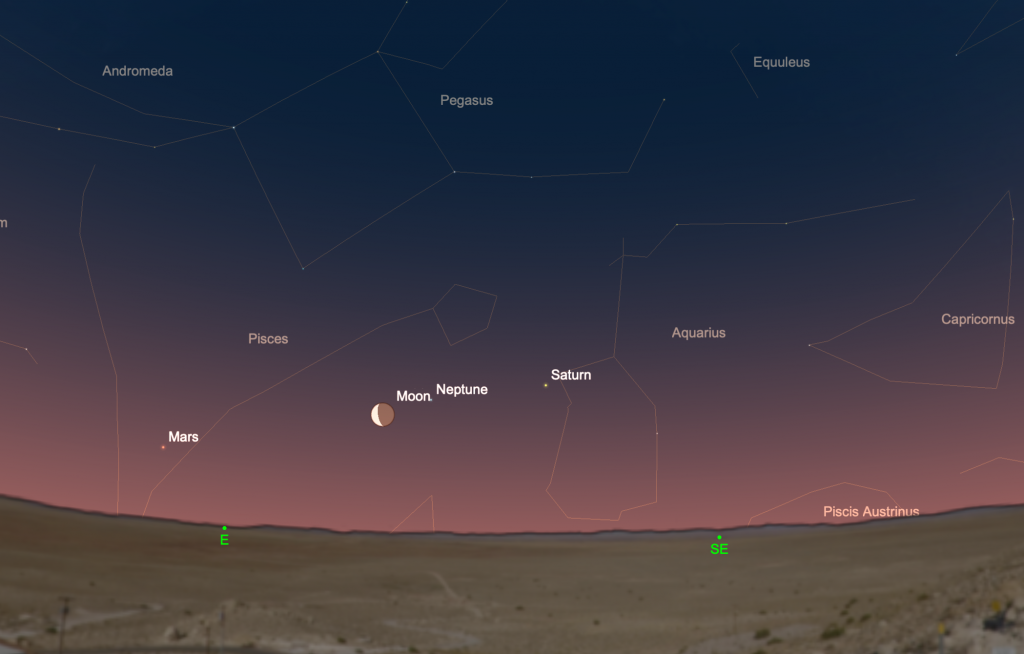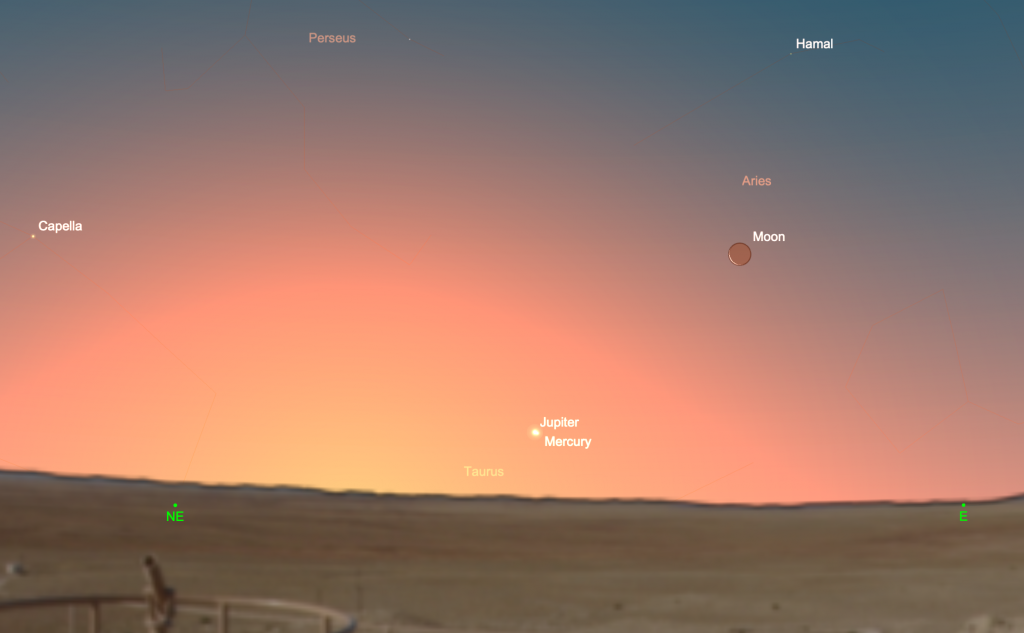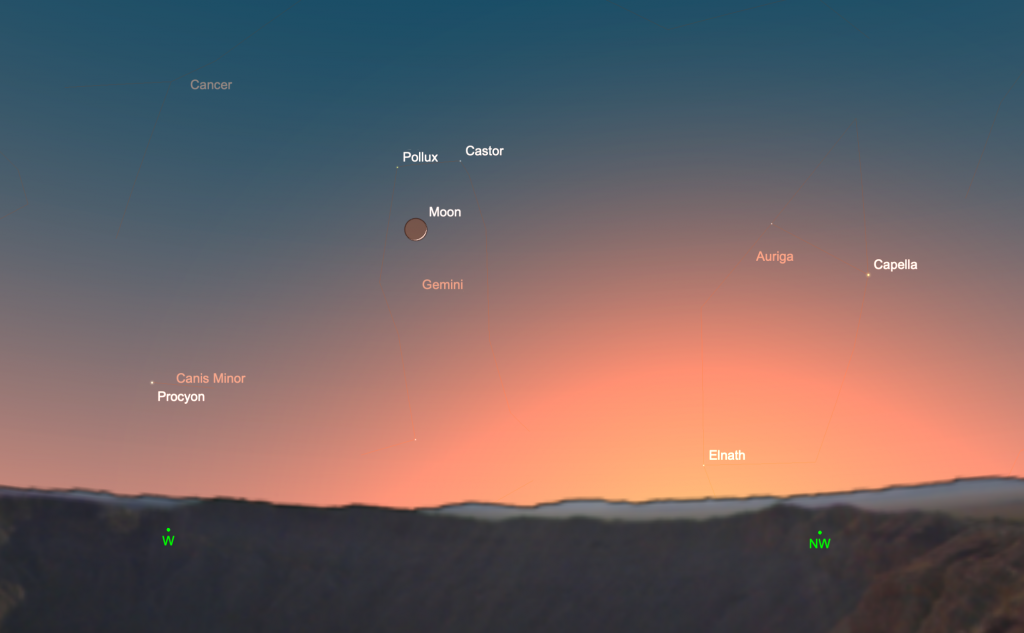
(Looking for last month’s ‘Night Sky’? Find it at this link…)
The June solstice arrives at last as stargazers in the southern hemisphere enjoy long nights and cooler temperatures, while we northerners enjoy some heat but much shorter nights – or very little night at all. Mars and Saturn grace the eastern sky before sunrise making some photogenic conjunctions during the month. Jupiter returns to the morning sky also and makes a close – if hard to observe – conjunction with Neptune. In a spectacular event that will be seen by absolutely nobody, the Sun occults Venus as the planet reaches superior conjunction. ‘Milky Way season’ also gets underway as the thickest and brightest part of our galaxy emerges over the southern horizon through Scorpius and Sagittarius. Here’s what to see in the night sky this month…

1 June 2024. Before sunrise, wander outside and look eastward to see a Mars, a waning crescent Moon, and Saturn in a 35o-long arc. Mars, now in Pisces, shines at magnitude +1.1 and spans a paltry 5.2” revealing little detail in a telescope. The Moon passes about 2o north of the planet on June 2-3. Saturn, just a hair brighter, spans about 17” and gets larger and slightly brighter on its way to opposition in September. The planet presents an odd sight this year. The alignment of its orbit and rotation plane means its rings are slowly appearing closer to edge-on and appear prominent but less striking that when they appear at a great angular tilt. Next March, the rings will appear entirely edge-on and will not be visible in a small telescope.

4 June. Here’s a tough one to see – Mercury and Jupiter lie as close as 0.1o from each other in the eastern sky before sunrise. Both planets shine at approximately magnitude -1.1, but they are very hard to spot in the bright morning twilight as they lie only 12o west of the Sun. Binoculars, or even a telescope, are required to see them, and a telescope is surely needed to see their disks. If you attempt this observation, do so before the Sun rises to make sure you don’t accidently aim your scope towards it. On June 5, the planets move further apart but an extremely thin Moon lies about 5o to the northwest. Jupiter emerges higher in the morning sky in the coming weeks on its way to opposition in December.
4 June. Venus reaches superior conjunction with the Sun. The planet lies on the far side of the Sun and is in fact occulted by it, an event that is essentially unobservable but nonetheless modestly spectacular in concept. Such occultations have been occurring in eight-year intervals since 1976 and will continue to do so until 2048. After today, the planet slowly moves into the evening sky.
6 June. New Moon, 12:38 UT

8 June. The constellation Gemini sets in the west at sunset this time of year, but tonight you see its bright stars Castor and Pollux and a slender lunar crescent form a triangle less than 6o across in the northwestern sky. The Moon continues its path eastward along the ecliptic and passes about 3º from Regulus on June 11 and as close as 1.2o from Spica on June 16.
14 June. First Quarter Moon, 05:18 UT
19 June. The fattening gibbous Moon passes as close as 0.3o from the red supergiant star Antares low in the southern sky.
20 June. The Sun reaches its northernmost point on the ecliptic at 20:51 UT. This solstice marks the beginning of summer in the northern hemisphere and winter in the southern hemisphere, and the longest and shortest days of the year, respectively.
22 June. Full Moon, 01:08 UT
27 June. Saturn comes as close as 0.08o from the gibbous Moon in the pre-dawn sky. The pair appear closest in Asia and the south Pacific, and observers in northern New Zealand and western Australia will see the moon occult the planet (timing and details here).
28 June. As the month winds down, a waning lunar crescent passes as close as 0.3o north of Neptune in the eastern sky before sunrise. At magnitude +7.8, Neptune makes for a challenging observation in the morning twilight sky.
28 June. Last Quarter Moon, 21:53 UT
30 June. Saturn reaches its first stationary point and now begins retrograde motion, moving westward against the background stars.